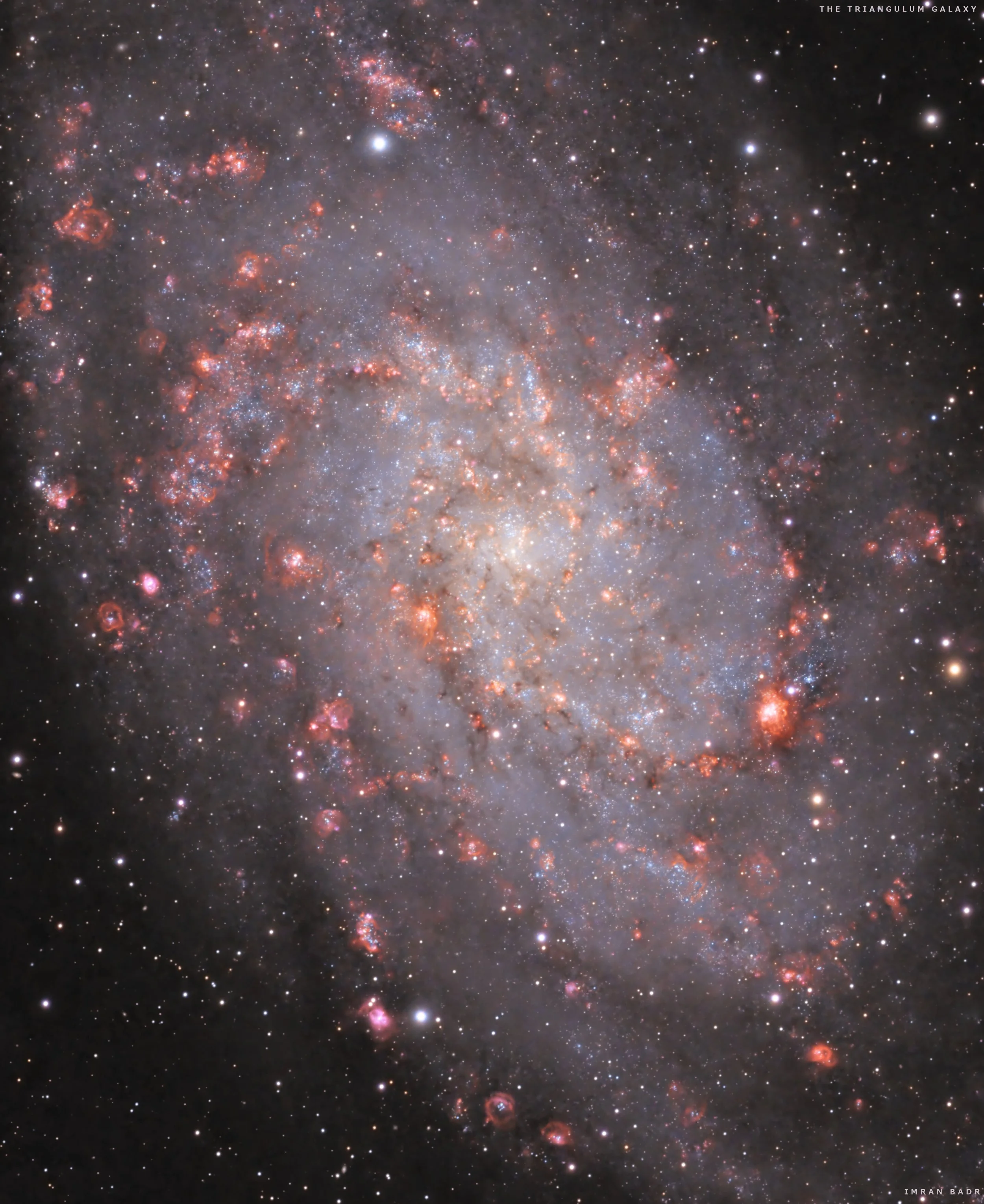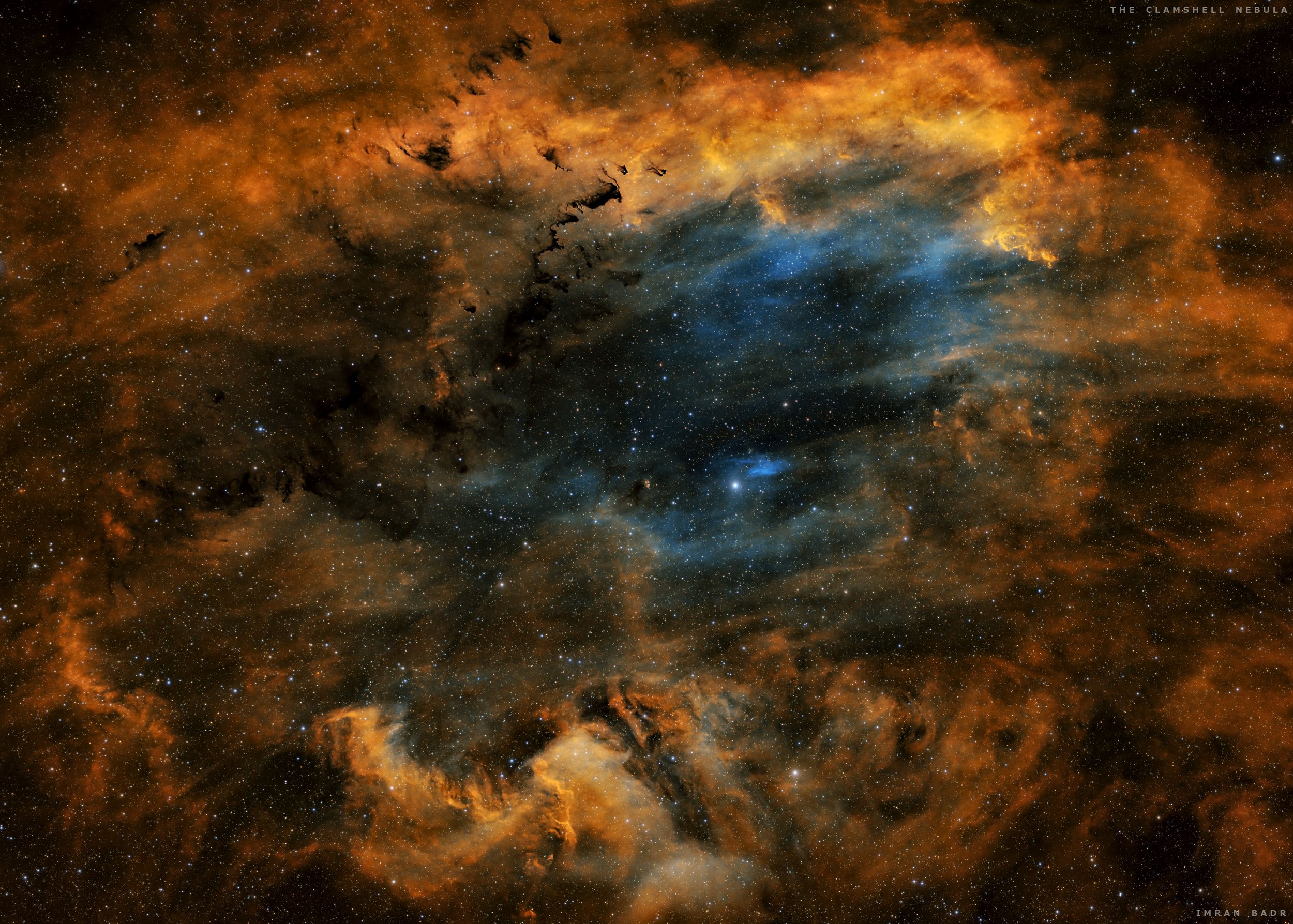
AAPOD2 Image Archives
M42 – The Orion Nebula in HDR-The Cosmic fire of creation
The Orion Nebula (M42) is one of the brightest and most studied star-forming regions in the night sky, located approximately 1,344 light-years away in the Orion constellation. This high-dynamic-range (HDR) image captures the nebula in unprecedented detail, balancing the luminous Trapezium Cluster at its core with the faint, intricate filaments of gas and dust extending outward. Achieved through meticulous exposure blending across multiple filters and sub-exposure lengths, this image preserves both the nebula's brilliant core and its dim outer structures, revealing the full depth of this stellar nursery.
M42 is an active star-forming region where massive young stars sculpt the surrounding hydrogen gas into complex, illuminated structures. The use of narrowband H-alpha and OIII filters isolates the ionized gas emissions, highlighting the nebula’s energetic processes, while broadband RGB and luminance exposures provide natural color and depth. The total integration time of over 26 hours ensures that even the faintest wisps of nebulosity are visible. This HDR composition offers a comprehensive view of one of the most iconic deep-sky objects, showcasing both its dynamic stellar interactions and its rich structural complexity.
The magnificent Sombrero galaxy (M104)
The Sombrero Galaxy, also known as Messier 104 or M104, stands as a celestial marvel in the constellation Virgo, captivating astronomers and stargazers alike with its distinctive appearance. This stunning spiral galaxy boasts a prominent dark dust lane that bisects its bright central bulge, resembling the brim of a sombrero hat, from which it derives its name. Located approximately 28 million light-years away from Earth, M104 spans about 50,000 light-years in diameter, making it one of the most massive galaxies in the nearby universe.
Its striking appearance is further accentuated by a vibrant halo of globular clusters, open clusters, and young blue stars that adorn its spiral arms, contributing to its overall grandeur. While its central bulge harbors a supermassive black hole, which is estimated to be about 1 billion times the mass of the Sun, the Sombrero Galaxy continues to intrigue scientists with its intricate structure and evolutionary history. Through the lens of telescopes and the wonders of astrophotography, M104 offers a glimpse into the cosmic ballet of galaxies, inspiring awe and curiosity about the mysteries of the universe.
The Angel in sky
The Angelfish Nebula Complex, also known as the Angelfish Nebula, is a fascinating region of space situated in the constellation Ara. This intricate celestial tapestry encompasses a variety of nebulae, including emission, reflection, and dark nebulae, each contributing to the complex's captivating appearance.
At the heart of the Angelfish Nebula Complex lies the prominent emission nebula designated as IC 4678, which glows with the light of newly formed stars embedded within its nebulous clouds. Surrounding IC 4678 are intricate tendrils of dust and gas, sculpted by the intense radiation and stellar winds emanating from nearby massive stars.
The Angelfish Nebula Complex offers astronomers a glimpse into the ongoing processes of star formation and interstellar dynamics. Its diverse array of nebulae presents a rich tapestry of cosmic phenomena, inviting exploration and further study into the mysteries of our universe.
The Triangulum Galaxy - M33
M33, also known as the Triangulum Galaxy, doesn't have a widely recognized alternative name like some other celestial objects. However, it is occasionally referred to simply by its Messier catalog number, M33. As the third-largest galaxy in our Local Group, after the Milky Way and Andromeda, M33 is a spiral galaxy located in the constellation Triangulum.
It is a popular target for amateur astronomers due to its relatively large size and proximity, making it visible in dark skies with binoculars or a small telescope. The Triangulum Galaxy is a fascinating object of study, providing insights into the dynamics and evolution of spiral galaxies.
The Clamshell Nebula (sh2-119)
The Clam Shell Nebula, officially known as NGC 2653, is a captivating celestial formation located in the constellation Camelopardalis, some 300 million light-years away from our own Milky Way galaxy. This mesmerizing nebula earned its popular moniker due to its striking resemblance to a giant clam shell gracefully unfurling in the cosmic depths. Its vivid colors and intricate, filamentous structures are the result of a tumultuous stellar birth and death cycle, where massive stars have exploded as supernovae, sculpting the surrounding gas and dust into a breathtaking display of cosmic artistry. The Clam Shell Nebula serves as a poignant reminder of the perpetual dance of destruction and creation that unfolds across the vast expanse of our universe.





